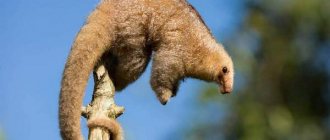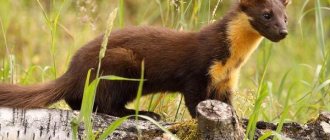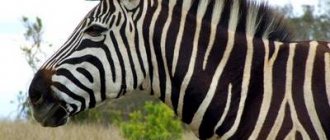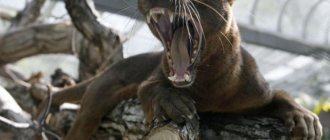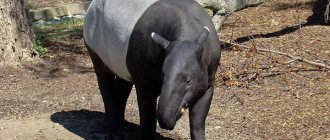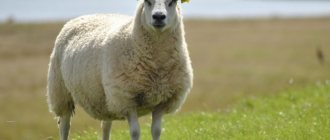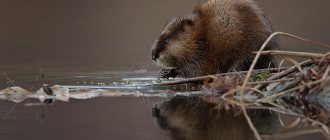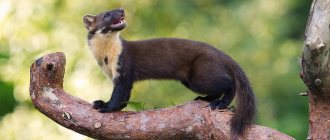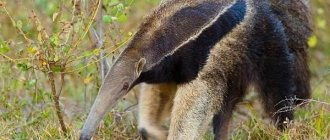Squirrel is one of the most popular hunting objects. Especially considering the fact that the world is home to a number of varieties of these fur-bearing animals, which they have learned to hunt everywhere. However, every hunter will say that for the success of his event, a good knowledge of the habits of these animals is necessary.
The squirrel is a small animal of the mammalian class, a rodent. The common squirrel is also called Veksha. Besides it, there are other types of squirrels, for example, red, palm, and flying squirrels.
In the European and Asian parts of the world, including in our country, the common squirrel is most often hunted, so we will talk about it.
Squirrel: general characteristics
These animals represent the order of rodents and are part of the large squirrel family. By the way, marmots, chipmunks and prairie dogs are also part of the squirrel family, and are their closest relatives.
Squirrels are small animals with an elongated, graceful body and short but strong legs. The body length of most squirrels ranges from 20-50 cm, and they weigh up to 1.5 kg. There are real giants in their family, with a body weight of up to 3 kg, and very tiny ones, whose weight does not exceed 50 g.
Yes, small, but beautiful, fluffy and charming
Rodents have a beautiful thick coat that is soft and silky to the touch. The color depends on the variety. Usually the color of their fur has all shades of red and gray, but there are squirrels with unusual variegated colors, and even individuals with a blue-burgundy coat. Black squirrels and albinos are extremely rare.
Twice a year, in spring and autumn, rodents undergo seasonal molting. The intensity of coat change depends on the food supply: the more abundant the food, the faster their coat changes.
A distinctive feature of squirrels is their long, luxurious tail. But this squirrel attribute serves the animals not only for beauty; the tail performs several important functions. Animals cover themselves with their tail while sleeping, and females warm their newborn babies with it, wrapping it like a blanket. Also, the tail helps squirrels maintain balance when jumping, and even saves their life, because thanks to it the animal will not break, even if it falls from a great height.
Fluffy rodents have well-developed sensory organs. Squirrels have excellent vision, they have a keen sense of smell and incredibly acute hearing. These creatures deftly and agilely climb trees, climbing onto the thinnest branches. They can swim, but they are afraid of water and underwater inhabitants, so they cross rivers only when absolutely necessary.
The lifespan of squirrels is 10-12 years. But they reach such a respectable age only in captivity, and in the wild they live no more than 3-4 years.
Elena
Ask a Question
Question to the expert
Do squirrels make sounds, and if so, what sounds?
Yes, squirrels express their feelings and emotions using different sounds. When an animal is scared or unhappy, it makes a clicking sound. During the mating season, males also click and try to intimidate their opponent with a sound vaguely reminiscent of grunting. Young squirrels “sing,” which manifests itself in hissing and quiet howls. A couple of squirrels in love communicate with each other using the same singing. And if a rodent quietly squeals and puffs, it means that he is quite happy with life.
How long does he live?
In their natural habitat, the lifespan of a squirrel is on average 4 years. Since the animal searches for food every day and travels long distances, its body quickly wears out. Preparing for winter and waiting out frosts also takes a lot of energy from the animal.
Under artificial conditions, the lifespan of a squirrel increases significantly. If an animal receives daily care and does not have the need to obtain food on its own, it can live more than 10 years.
Interesting fact : at home, squirrels are prone to obesity. They don't burn off the accumulated calories because they sit in the cage all day. The problem is solved by installing a wheel in which they can run.
Habitat
Squirrels can be found in almost every corner of the planet. They successfully settled on all continents, except Australia and Antarctica, covered with eternal ice.
Squirrels and the forest are inextricably linked
Fluffy animals are distributed throughout Europe, from the taiga zones of Siberia to the Mediterranean coast. They live in most of Asia; there are these animals on the African continent. Squirrels live in North and Central America and also inhabit most of the South American continent.
Rodents have chosen deciduous and coniferous forests as their habitat. Squirrels have perfectly adapted to the harsh conditions of northern latitudes and humid tropics; they feel quite comfortable in high mountain regions and swampy mangroves. The natural habitat of squirrels is inextricably linked with trees, so they avoid deserts, steppes and plains, where there is absolutely no food for them and nowhere to hide from predators.
Tailed creatures are attached to their home and do not like to travel too much. But during periods of famine, when there is a catastrophic shortage of food in the forests, squirrels begin mass migration to explore new territories. The animals travel hundreds of kilometers, crossing rivers, steppes and mountains, and only the strongest individuals will be able to survive such an “odyssey” full of dangers and hardships.
Description of the rodent
— Advertising —
Squirrels have an elongated body with a long fluffy tail, long ears, often with tassels, the fur is dark brown or red with a light belly, and often turns gray in winter. In general, the color of squirrels is very diverse and differs depending on their habitat.
Squirrels molt twice a year; once a year, only the tail sheds. Spring molting occurs from April to May, autumn molting occurs in September-November.
Lifestyle and character traits
Squirrel activity occurs in the morning and evening hours. As soon as the first rays of the sun fall to the ground, rodents leave their cozy tree house and go in search of food. For several hours, the squirrel busily moves through the forest, looking for nuts, acorns and seeds, and towards noon it returns to its hollow to have a snack and rest before an evening walk.
These rodents do not hibernate in winter, but in severe frosts they sit out in their nest, eating the reserves accumulated over the summer. Sometimes a whole group of 5-8 squirrels gathers in one shelter for the winter, because together it’s not so scary and much warmer.
Lifestyle of squirrels
It is unusual for furry animals to live in families; they prefer solitude and solitary existence. Only during the mating season do animals spend some time in pairs, and of course, newborn squirrels live next to their mother until they reach adulthood.
This hollow is busy!
Squirrels do not establish friendly relations with their relatives, but conflicts between them rarely arise. These rodents have no such thing as a personal territory; they coexist quite peacefully in neighbors’ hollows. The squirrels try to drive away all uninvited guests from their home, but do not get involved in fierce fights. And all because these animals set up several houses for themselves, the number of which can reach up to 15. And if the squirrel discovers an impudent lodger in its shelter, it will simply move to other apartments.
Squirrels live not only in tree hollows, but also in abandoned bird nests. And they themselves are skilled builders, and often build houses for themselves from branches fastened together. The animals line each shelter with leaves, moss and even scraps of wool to make it dry and cozy.
Most of a squirrel's life is spent in trees. Among the dense crowns, furry rodents feel most comfortable, because thanks to their agility and low weight, they easily and quickly move even along the thinnest branches. But trees cannot provide the animals with adequate nutrition, so in search of food they have to go down, risking ending up in the clutches of a predator.
Knowing about the danger, squirrels on the ground behave shyly and cautiously. They move in short leaps, trying to stay close to tree trunks. During their land walks, the animals often freeze on their hind legs, listening to the sounds of the forest. And at any suspicious rustle, the squirrels rush to take refuge in the saving crown, skillfully camouflaging themselves in the dense foliage.
Wintering
Hollow
Spending most of their lives on trees, these animals build nests for themselves. They are built in the form of a ball from flexible twigs. The inside of such dwellings is insulated with moss and the animals’ own hair.
Will a person who is not specifically interested accidentally hear the name of a squirrel’s nest? There are few chances. Gaino is the name of not only a squirrel’s nest, but also the nests of other animals.
It can build a tree either in a hollow or in a fork of a tree between thick branches at a height of 5-17 meters. In addition to the main entrance, a small emergency entrance must be built from the side of the trunk to escape from uninvited guests.
The number of nests in one squirrel can reach 15 pieces. Each squirrel nest has its own purpose. Often the animals are forced to change their homes by the parasites that live in their nests.
The male squirrel does not build a nest. He occupies abandoned squirrel nests or completes abandoned bird nests.
Where do squirrels live in winter? In winter, they live in insulated nests, which are often built in hollows. During wintering, one squirrel nest can be occupied by 3-6 individuals. Having carefully plugged the entrance with moss, the animals try to warm each other. A fluffy tail also helps to stay warm during winter.
During severe frosts, the temperature inside the nest where the squirrels sleep can reach 15-20 degrees, so they are in no hurry to leave it until it warms up.
Reserves
The animal prepares in advance for a warm and satisfying winter. Knows how to choose food that will not spoil all winter. Hollow trees are often used as storage areas. It can also hide food underground between tree roots.
Having made the necessary food reserves, the squirrel forgets about them. She will later discover most of them by chance when inspecting suitable places. It happens that she comes across supplies of other animals: mice or chipmunks. From reserves that are not found by either the squirrel or other animals, new trees can grow.
Reproduction and raising of offspring
Squirrels become sexually mature when they reach 6 months. But at such a young age, rodents are just beginning to explore the world around them and get used to living independently, so their interest in the opposite sex awakens when they are 1 year old.
Mating season
The rutting period for these animals begins at the end of January and lasts until August. During one mating season, squirrels are capable of raising up to 3 generations, but their fertility depends on factors such as weather conditions and food resources. In unfavorable years, when there is little food in the forests, rodents produce only 1-2 offspring per year.
This loving couple will soon have babies
Starting from the last month of winter, whole flocks of furry animals gather in squirrel habitats. After all, several suitors claim one female at once, and 4-7 suitors follow the tailed beauty. And to attract the attention of a lady, males organize real knightly tournaments. It rarely comes to the point of a fight; the squirrels simply make clicking sounds and knock on the wood with their paws. Well, the female carefully watches their “combat tap dance”, and in the end chooses the strongest and most courageous gentleman.
Fun fact: Size matters with squirrels! And we're talking about their tail. The longer and more luxurious the male’s tail, the greater his chances of winning the favor of a capricious young lady.
Duration of pregnancy and childbirth
After mating, females do not waste time, but immediately begin to prepare for future motherhood. The squirrels look for a new spacious hollow, and carefully furnish it with a soft bedding of leaves and moss so that the newborns are warm and comfortable. In some varieties, males help partners build a maternity nest, but in general, all the troubles of raising the cubs fall on the shoulders of their furry mothers.
Newborn baby squirrels
Recommended by topic
Fox Panda Lynx
Pregnancy in these animals is quite short-lived, and already 35-40 days after fertilization, tiny squirrels are born. In one litter there are from 3 to 10 babies, they are born blind, deaf and bald, weighing only 8 g. The development of newborns occurs at a slow pace, only on the 14th day they are covered with soft fur, and their eyes open after the first month of life. The cubs are fed with nutritious mother's milk for 40-50 days, then switch to adult food in the form of seeds, greens and nuts.
Squirrels have an interval between births of approximately 13 weeks. As soon as the first brood leaves the nest, the female gains strength within a few days, fattens up, and again looks for a mating partner worthy of becoming the father of her next offspring.
Caring for the Cubs
Squirrels are very responsible and loving mothers, and from the moment of birth they devote all their time to caring for their babies. While the newborns are blind and helpless, the females leave their home only for a quick lunch, visiting their nearest storerooms. Leaving the babies alone, the squirrels carefully disguise the entrance to the nest with a piece of moss to protect them from prying eyes. And every few days they move their heirs to a new shelter, trying to confuse predators who might be attracted by the smell of the nest.
The baby squirrels can’t wait to explore and explore everything around them.
When baby squirrels turn one month old, mothers’ worries only increase. After all, furry children are very inquisitive, and they are attracted by the magical world outside their home. At first, the kids only timidly peek out of the hollow, and at an unfamiliar sound they rush to take refuge in its safe depths. But curiosity overcomes fear, and soon they are already starting fun games, jumping on branches and climbing tree trunks. Well, the females have to look after their mischievous brood, and make sure that the especially nimble little squirrel does not fall from the tree or fall into the paws of a bird of prey.
The squirrels spend their entire childhood and youth in such carefree entertainment, after which the most important stage in their life begins - separation from their mother. The young leave their native nest at the age of 3-4 months, and each of them faces an independent life, full of dangers, but such an interesting and multifaceted life.
Most squirrels die at a young age, having survived their first winter. Many of them will become victims of predators, some will be shot by a hunter, and some will die from a deadly infection. But thanks to fertility and the ability to adapt to any conditions, the squirrel race has every chance of survival.
Appearance
The squirrel is a very nimble animal, but it is still quite easy to notice and distinguish from other rodents. Its color varies not only depending on the species, but also depending on the season. In summer they are brown or dark brown, black, white and even gray.
There are also representatives whose coat has an unusual appearance, for example, the main color is black, which is diluted not only with red, but also with white shades. The belly always has a lighter color or is generally pure white.
In winter, many representatives change their color to lighter, ashy or even white. The quality of the fur also changes; it becomes tougher, but shorter.
These cute animals have a medium-sized body, up to twenty-eight centimeters, but a long tail, which can reach a length of up to nineteen centimeters. The tail is fluffy, but due to the hairs, which are quite long, it seems flat.
The head is small with small black eyes that look more like beads. Another distinctive feature of many species of squirrels is the tufts on their ears.
Natural enemies of squirrels
Forest squirrels have a difficult life; almost every day they are forced to fight for their existence. After all, there are a lot of predators around who are trying to catch a furry animal for dinner. Moreover, the threat to them comes from both the ground and the air, and even in the dense crown of a tree, squirrels cannot feel completely safe.
The sly fox waits for the squirrel to come down from the tree
Once a squirrel descends to the ground, it runs the risk of being ambushed by a weasel, ermine or sable. She has to beware of foxes, wolverines and martens, as well as small predators such as ferrets, which do not miss the opportunity to hunt this rodent. And among the representatives of the cat family there are many who want to feast on squirrels. Cougars, lynxes and jungle cats are excellent tree climbers, so it is not difficult for them to catch an animal in its native element.
This squirrel is lucky that the eagle owl is sleepy and well-fed
For birds, squirrels are also desirable prey. As the sun sets, owls, eagle owls, and hawks fly out to hunt at night, and as soon as a rodent loses its vigilance for even a minute, it finds itself in the claws of a bird of prey. Sometimes miniature creatures die in the deadly embrace of snakes, but for the most part sick animals become victims of reptiles, because catching a healthy, agile squirrel is not so easy.
In addition to natural enemies, competitors also annoy squirrels a lot. Mice, chipmunks and wild hamsters often destroy their carefully collected food supplies for the winter. And also, furry animals are constantly fighting with birds for hollows and shelters in tree crowns.
Suburban squirrels also have it tough. Yes, they are unlikely to encounter a wild animal in the park, but danger lurks in the city groves. Stray cats and dogs are not averse to preying on the fluffy inhabitants of public gardens, and young squirrels can become a snack for crows and jays.
Nutrition
Most people believe that it is exclusively a herbivore. Indeed, the most favorite delicacy is the seeds of cedar, spruce, and larch cones. The forest squirrel also eats berries, mushrooms, roots and other plant foods.
However, when there is a shortage of food, as well as during reproduction, larvae, insects, small amphibians and even eggs and small chicks are added to the diet.
Commercial significance
The squirrel is considered a valuable fur-bearing rodent and is one of the most popular objects for fishing. So, in Russia it is hunted in the forests of Siberia, Yakutia and the Urals.
In the Soviet Union, squirrel fur was ahead of only sable fur in terms of the total number of preparations. However, today the mass acceptance of the skins of these rodents is limited and since 2009, wecksha fur is rarely put up for auction.

